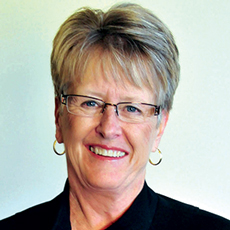
It’s no secret the economic landscape is dramatically changing for providers. You go to sleep thinking about bundled payments and looming hospital readmission penalties. You wake with pay for performance, new Centers for Medicare & Medicaid Services rules, and your ability to drive positive outcomes on your mind. The ability to effectively manage these initiatives hinges on a number of factors, but successfully driving post-transition outcomes is critical to all of them. Discharge can no longer mean “Good-bye and good luck.” To remain competitive, providers must adopt sound transition planning practices that drive post transition success and provide the outcomes needed to thrive the new economic reality.
Our frame of reference in the past has been on recovery – on providing the patient with the healthcare services designed to get the patient well enough to discharge. Obviously, this is still critically important. But what happens once that patient leaves your facility and the support of the healthcare team is no longer at their fingertips? Do you know? And why should you even care? The new reality is all about safe and sustainable transitions. Preventing transition failures must be a cornerstone of business strategy to be successful in the evolving health care economy.
Where can you start?
In preparation for meeting these emerging business realities, providers should focus on the fundamental processes that have been shown to have an impact upon post-transition success. We all know that quality of clinical care and oversight is an expectation in promoting optimal recovery and safe transitions. But it has been clearly demonstrated by studies such as Project Red that without attention to other fundamental processes, the patient is not as prepared to self-manage. Key processes that drive safe and sustainable patient transitions include:
- Patient activation and engagement
- Identification of expectation gaps
- Real-time patient feedback
- Timely, relevant patient education
- Patient readiness to self-manage
- Clear post-transition instructions
- Post-transition follow up
- Ongoing patient and staff feedback
Considering these fundamental processes, the next step is to determine how you can begin implementing strategies that address each of them. Here are a few ideas to get the thinking process started:
- Patient education is often an overlooked aspect of care. But consider the short-stay patient who goes home with no real understanding of how to manage his or her condition. That’s a recipe for failure. Providing patient education that is relevant to the patient is a key component of driving successful patient transitions.
- Something as simple as making follow-up appointments for the patient has been found to have a huge impact upon transition failures. Making appointments before a patient discharges and giving them the information they need related to the date, time, and location of upcoming appointments is a simple yet critical task.
- Arranging for post-discharge services and equipment has obvious implications. If the patient gets home on Thursday and their wheelchair doesn’t arrive until Saturday it’s easy to understand the challenges that poses.
- Regulation stipulates that patients have to receive a written discharge plan. And most providers comply with that. But I have had the opportunity to review many discharge plans — very often they are handwritten, with language the patient can’t understand, and are not comprehensive in terms of the instructions patients need to succeed. Every patient discharged should go home with a clear, comprehensive set of instructions that guide them on the road to a successful transition experience.
Understanding that discharge is so much more than just getting a patient well is the first step of your journey. From here, examine the fundamental processes that drive safe and sustainable transitions and determine strategies you can begin implementing in your organization to drive them.
Janice Gulsvig, COO of Align, has more than 35 years of experience in the field of senior healthcare, with extensive leadership spanning both for-profit and not-for-profit sectors.




